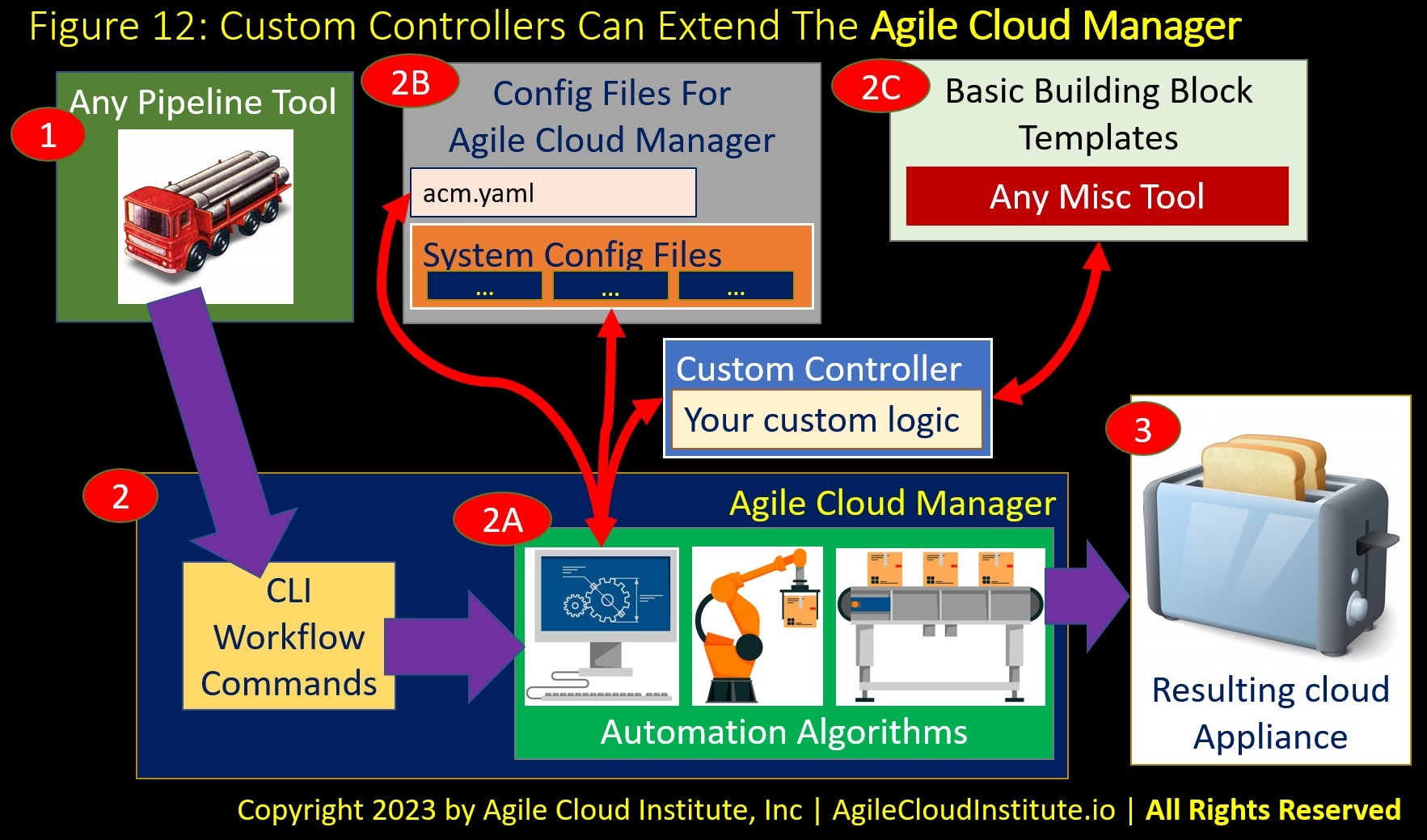Architecting the Agile Enterprise with the Agile Cloud Manager
Part 12 of 16: How Custom Controllers Allow You To Extend The Agile Cloud Manager
The Agile Cloud Manager ships with many pre-installed controllers that enable it to operate on a variety of third-party automation tools including Cloud Formation, ARM Templates, Terraform Modules, Packer Templates, and others.
However, you can also create your own custom controllers which you can use to extend the Agile Cloud Manager to meet specialized requirements within your enterprise.
Figure 12 is entitled “Custom Controllers Can Extend The Agile Cloud Manager”.

Figure 12 illustrates how a custom controller that you create can act as a go-between to connect the Agile Cloud Manager’s automation algorithms with any third-tool with which you might want to integrate.
Figure 12 illustrates how your own custom controllers can be orchestrated using the same Agile Cloud Manager CLI commands and the same system templates and appliance templates written in the same Agile Cloud Manager Domain Specific Language DSL.
The difference is that your custom controllers can do anything that you program them to do.
This means that custom controllers that you develop can enable your extensive preexisting business logic to become more fully integrated into the enterprise-level pipelines that the Agile Cloud Manager makes possible.
A working example of a custom controller is available in our GitHub site and is described in the engineering section of this web site.
Custom controllers can potentially be written in any programming language. But the working example that we provide is of a custom controller written in Python.
If you decide that you require a custom controller, we recommend that you begin by running our working example of a custom controller, and that you then incrementally experiment with adding new functionality to it.
Next: Proceed to Part 13 of 16
back to Site Home
back to Architecture section Home
Back to Part 11 of 16